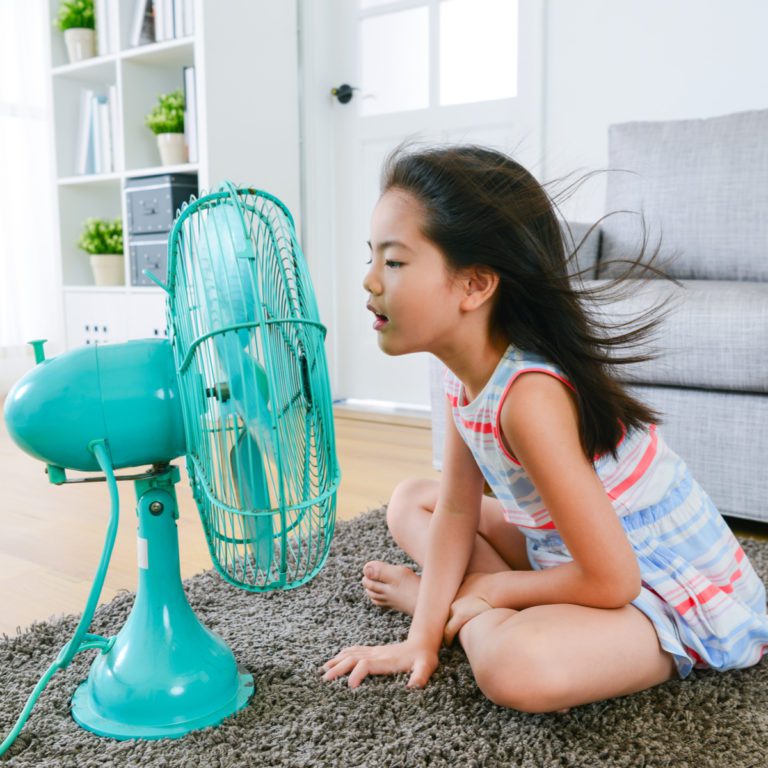Humidity and How to Control It in Your Home

It’s no secret that optimal humidity levels can make your home more comfortable, especially during the coldest and warmest parts of the year. Humidity can also affect your health and that of your family, both directly and indirectly. The team at Getzschman put together this humidity guide to help you stay healthy and feel comfortable year round.
Ideal Humidity Levels
Humidity is conveyed as a percentage that represents how much moisture is in the air at any given time. In your home, humidity is considered too high when it reaches more than 50% concentration. Your humidity levels may be too low if they fall below 30%.
Generally, the optimal humidity level in the summer is 40 to 50% and the ideal level in the winter is 30 to 40%. These differing ranges help account for seasonal temperature changes. Too much humidity in your home in the winter can lead to condensation on the inside of your windows.
High Humidity Health Issues
In many locations, including the Midwest, the summer months have the highest levels of humidity. Here in Nebraska, you may see outdoor humidity levels of more than 80% during the summer.
These higher humidity levels make it feel hotter both outside and inside. For example, imagine a summer afternoon with a temperature of 95°F. If the humidity were 30%, it would feel like 95°F outside. But if the humidity climbed to just 65%, the temperature would feel like a scorching 117°F. At Nebraska’s upper humidity range, the temperature could feel as high as 125°F.
High humidity can have a range of negative health effects, including:
- Increased risk of heat-related conditions – Long periods of exposure to high temperatures and humidity can result in inefficient bodily cooling. Heat cramps, heat exhaustion, and heatstroke can cause loss of salts and fluids, as well as dangerous symptoms like fainting.
- Poor-quality sleep – Most individuals get their best quality sleep in a cool environment. When the temperature in your bedroom climbs, you may have trouble falling asleep and staying asleep. Over time, poor-quality sleep can contribute to irritability, lack of focus, and lethargy.
- Worsening allergies – Pollen and dust mites thrive at higher humidity levels, which means that people with allergies to airborne particles or people with respiratory conditions may experience more intense symptoms. Additionally, humidity contributes to mold growth which can make indoor air toxic.
To beat the heat, it’s important to keep your indoor humidity within optimal levels over the summer.
Low Humidity Health Issues
In the winter, humidity levels drop. While Nebraska’s outdoor humidity generally stays above 40% in the winter, using your heating system reduces the overall moisture in your home.
If your indoor air becomes too dry, you may experience the following health problems:
- Congestion and cough – Dry air irritates your body’s mucous membranes, such as those found in the nose and throat. When the membranes in your nose and sinuses become too dry, you may experience runny nose, congestion, and sneezing. When dry air affects your throat, you may experience soreness and coughing.
- Dry skin – Exposure to dry air depletes the moisture in your skin. The dry your skin gets, the more likely you are to experience itchiness, cracks, and scaliness. If you have a skin condition like eczema, dry conditions may exacerbate your typical symptoms.
- Itchy eyes – Dry air can reduce your eyes’ ability to produce enough tears to properly lubricate the surface of the eyeball. You may notice itchiness, excessive blinking, redness, or a gritty feeling. Dry eyes can increase your risk of eye injury since the symptoms of dry eye encourage you to rub at your eyes, which can lead to corneal abrasions and the introduction of foreign particles.
- Persistent illness – Many individuals experience colds or the flu more often in the winter. This increase in illness frequency is due in part to low humidity levels. The flu virus, for example, lives longer on surfaces when the humidity is lower. Extremely low humidity levels increase your risk of illness and make it more difficult to recover from a seasonal ailment because you have to work harder to stay hydrated and get quality sleep.
In order to keep yourself and your family comfortable throughout the winter, you may need to dramatically increase your indoor moisture levels.
How to Control Humidity in Your Home
How do you know what the humidity level is in your house? You can measure the humidity level in your home easily with a hygrometer. These instruments measure water vapor in the atmosphere and are readily available at home improvement and other stores.
You can make small changes to the humidity levels in your home by making smart choices. For example, in the summertime, use ventilation and fans to disperse the moisture created by bathing and running appliances.
In the winter, you can increase humidity by taking hot showers and air-drying your laundry. However, if you notice negative effects caused by either high or low humidity, consider a long-term solution instead.
Use a whole-home humidifier or dehumidifier to better control your home’s air quality and seasonal health conditions. Learn more about dehumidifiers in our blog “Dehumidifiers 101: What This Appliance Does and Why You Need One.”
